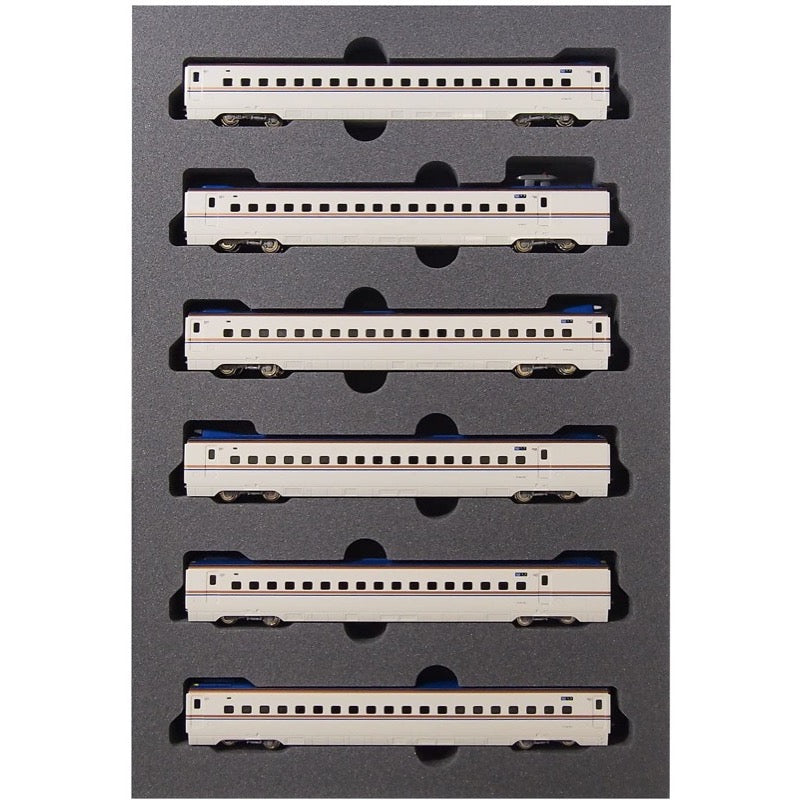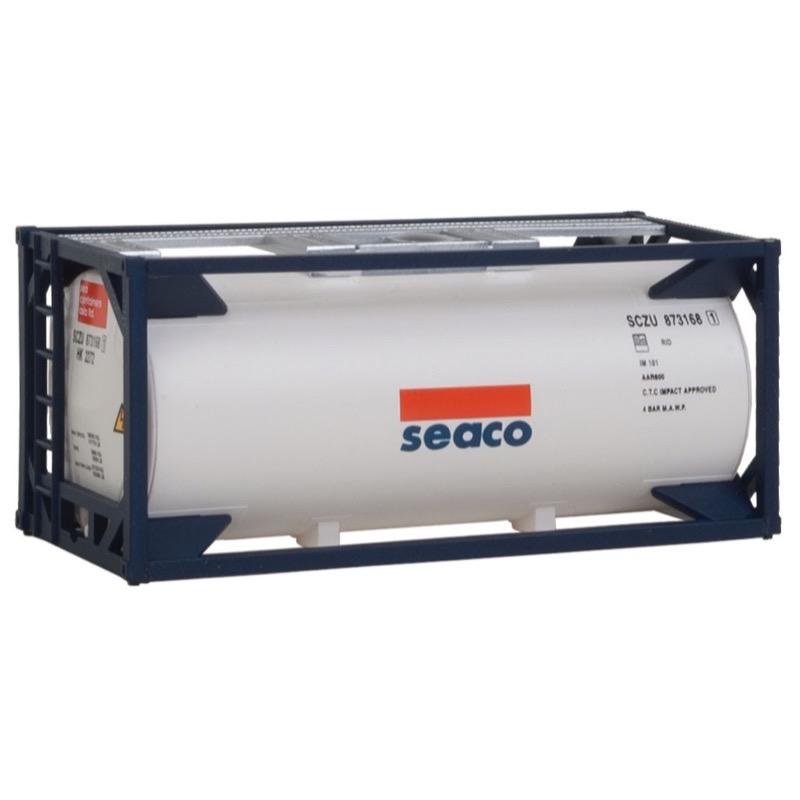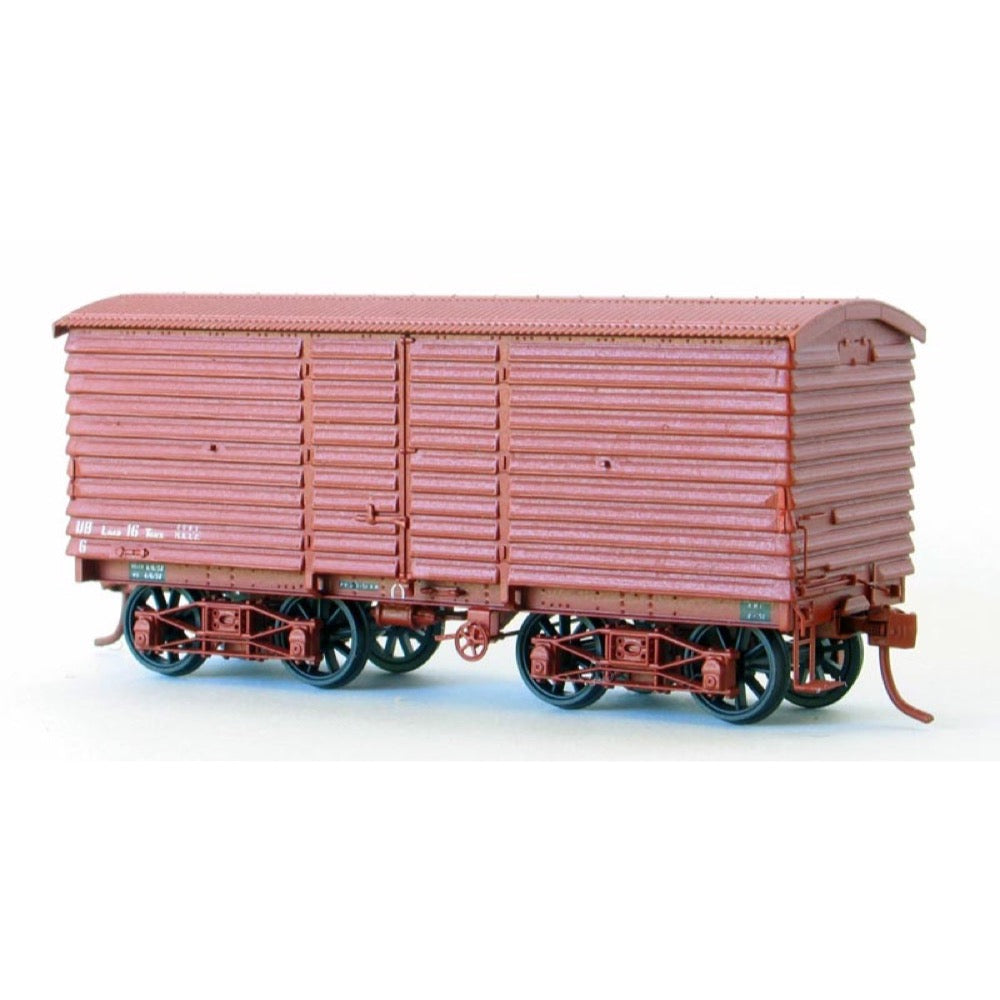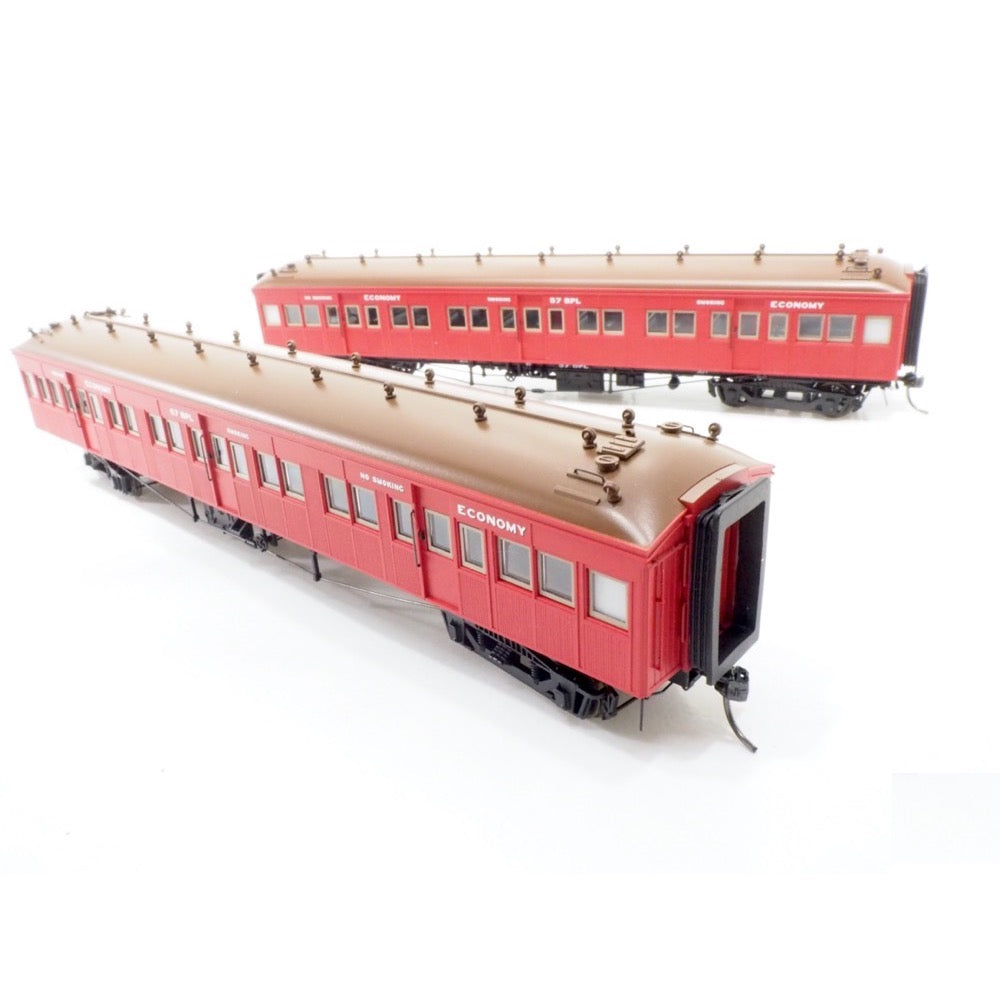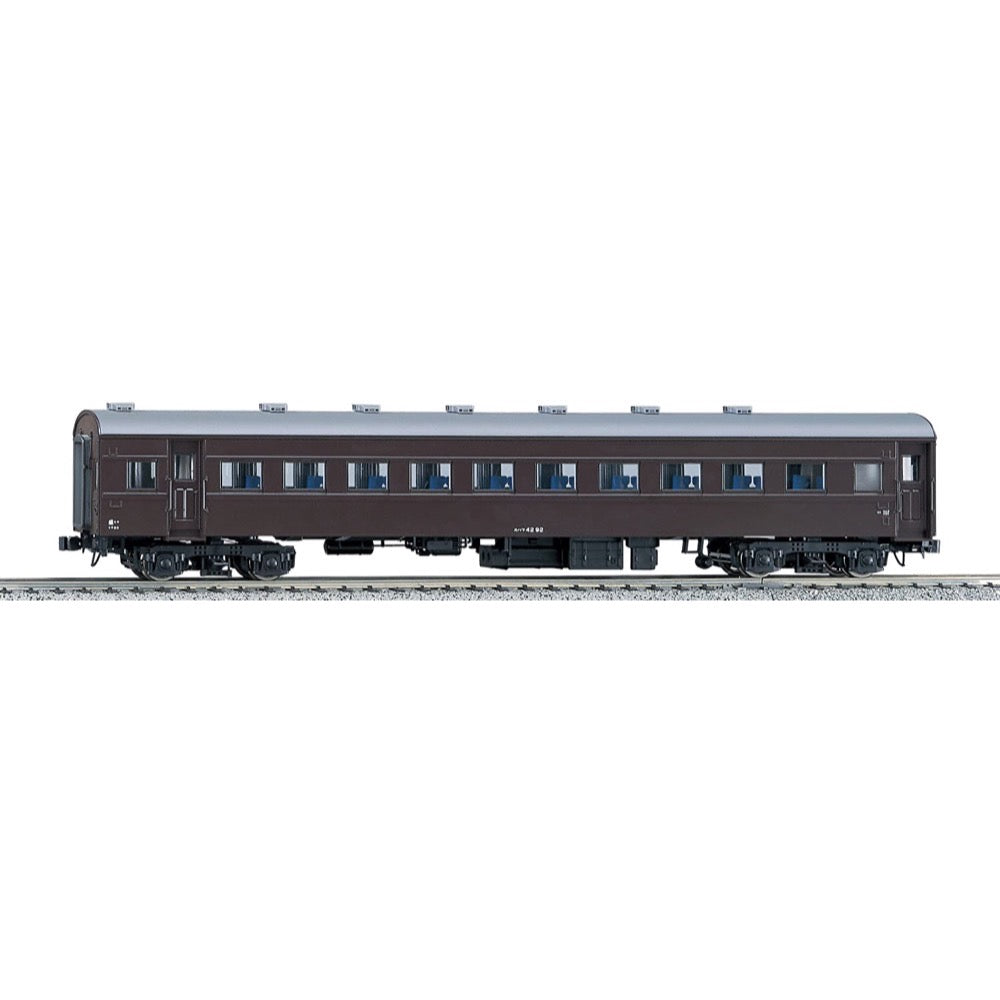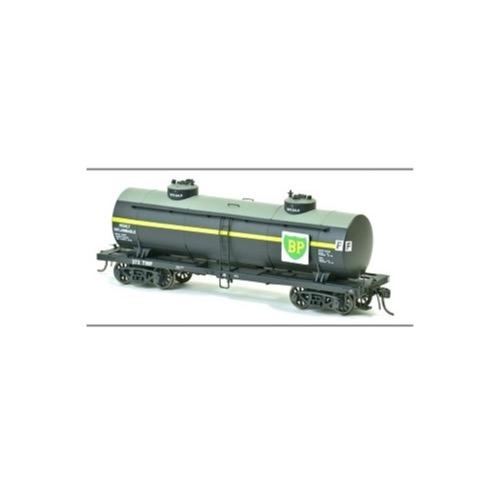
SDS Models HO VR TWF 10000 Gallon Tank Car TWF 373 BP
29.00
$
<h3>10000 Gallon Rail Tank Car Series</h3><p>SDS Models is producing a range of 10 000 gallon rail tank cars based upon a standard VR design 38 foot welded underframe. These HO Gauge models are presented with four unique, oil company specific, tank designs and accurately portrait the prototypical differences between each companies versions to meet their intended requirements. The models cover all major brands used in Victoria with the exception of the Shell Oil Company whose fleet rode on 36 foot riveted underframes.</p><h3>The models are available in triple-packs and are categorised into three groups:</h3><ul>
<li>OT - as delivered in the early 1950s to the early 1960s</li>TW / TWF - 1960s to the late 1970s<li>VTQA / VTQF / VTQY - 1980s and 1990s.</li>
</ul><h3>Model Features:</h3><ul>
<li>Highly detailed Ready-to-Run HO scale model</li>
<li>Injection moulded high quality plastic body</li>
<li>Etched metal walkways</li>
<li>Full brake rigging and underfloor detail</li>
<li>Semi scale metal rimmed wheels</li>
<li>OT bogie, 5’11” wheelbase with 36" diameter wheels.</li>
<li>Genuine Kadee #158 whisker coupler</li>
<li>18” Minimum radius recommended</li>
</ul>
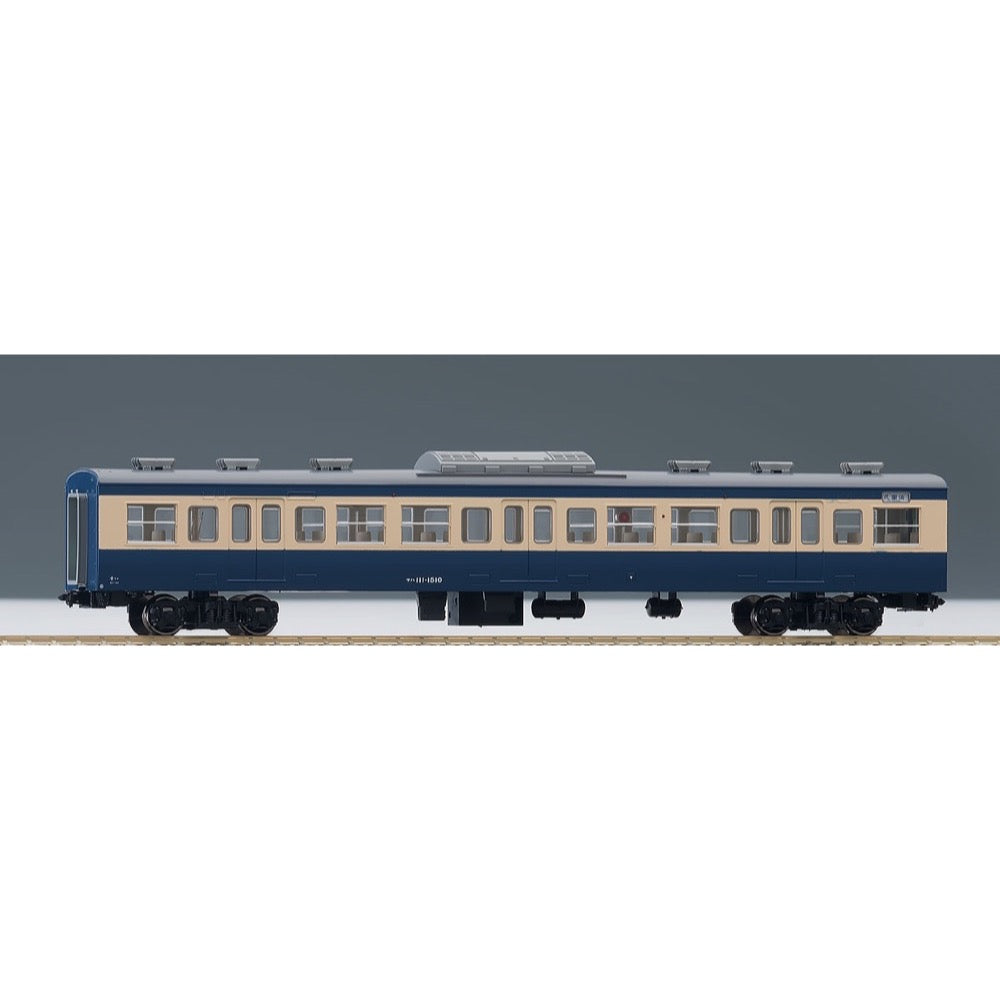
Tomix 56005 HO Saha 111-1500 type (Yokosuka color)
54.00
$
<p>The 113-1500 series was introduced in 1979 as a minor change to the 113-1000 series suburban trains used on the Yokosuka and Sobu Rapid Lines, with seat pitches widened. The</p>
<p>2000 series, which also has wider seat pitch, is characterized by some changes to the layout of the windows in the Kuha due to ATC equipment, and the position of the headlights and typhoons being higher. The intermediate trailer car, Saha 111-1500, was introduced without the toilet facilities that were previously available on the 0 series.</p>
<h3>Features</h3>
<ul>
<li>The side indicator lights are installed with new parts</li>
<li>The H-rubber part of the window is reproduced in gray</li>
<li>Some markings such as capacity, conversion, and end notation are printed</li>
<li>The car number can be selected using a transfer sheet (use the one included in the basic set)</li>
<li>The side destination display part can be reproduced with a realistic back-sticking type that reproduces the sticker selection type (use the sticker included in the basic set)</li>
<li>Able to pass through a minimum radius of R490 </li>
</ul>
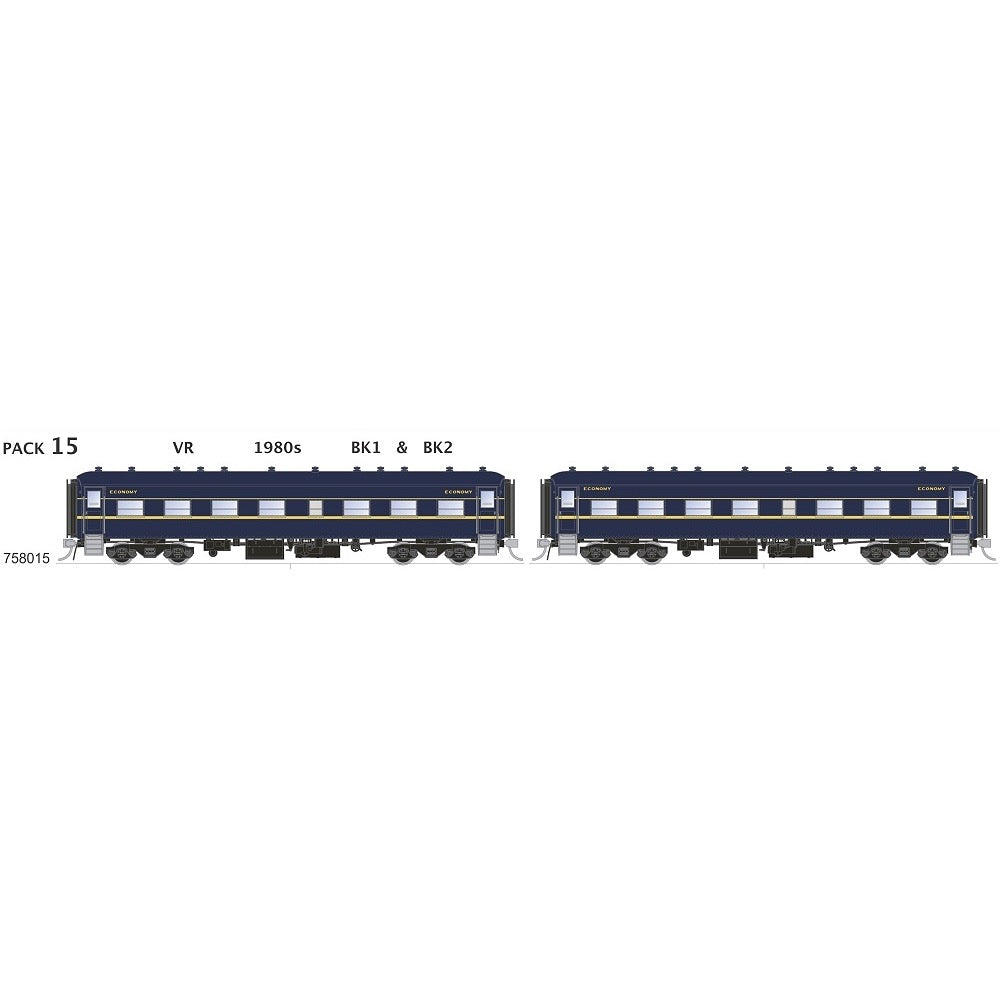
SDS Models 758015 HO SAR 700 Class Passenger Cars Pack 15 VR BK1 and BK2 2 Car Pack
125.00
$
<p>The South Australian Railways introduced 36 steel bodied country passenger cars between 1936 and 1941. Of these cars the last 24 built, entered service in 1940/41. They were all of a similar external appearance and the same overall length.</p>
<p>16 were coded 700 to 715, these were Second class centre aisle cars. 4 were coded 750 to 753, these were Composite class centre aisle cars. 4 were coded 780 to 783, these First class centre aisle cars.</p>
<p>Originally introduced with frameless full drop windows, they were progressively replaced with half drop chrome plated framed windows from the mid 1950s through to the very early 1960s.</p>
<p>Introduced in Hawthorn green and cream with black roofs up until the mid to late 1960s, when they were progressively repainted into Regal red and Silver to match the newer country stock.</p>
<p>In the early 1970s 4 cars were transferred to standard gauge to work between Broken Hill and Peterborough. Later in the early 1980s several cars were hired to Victorian Railways.</p>
<p>Many 700 series cars also saw service with West Coast Railway in Victoria, Steam Ranger in South Australia, North Rivers Railroad with Ritz Rail in Northern NSW.</p>
<h3>Features</h3>
<ul>
<li>Highly detailed Ready-to-Run 1/87 Scale HO gauge model </li>
<li>18” Minimum radius recommended</li>
<li>Precisely tooled plastic body (ABS)</li>
<li>Genuine Kadee scale head whisker coupler </li>
<li>Separately applied handrails and detail parts</li>
<li>Two body style options: Original 8 vent roof and later 13 vent roof</li>
<li>Two window style options: Original Beclawat frameless full drop window and later Wahner framed half drop window</li>
<li>Three full interior options for each class and with appropriate seat covering colour</li>
</ul>
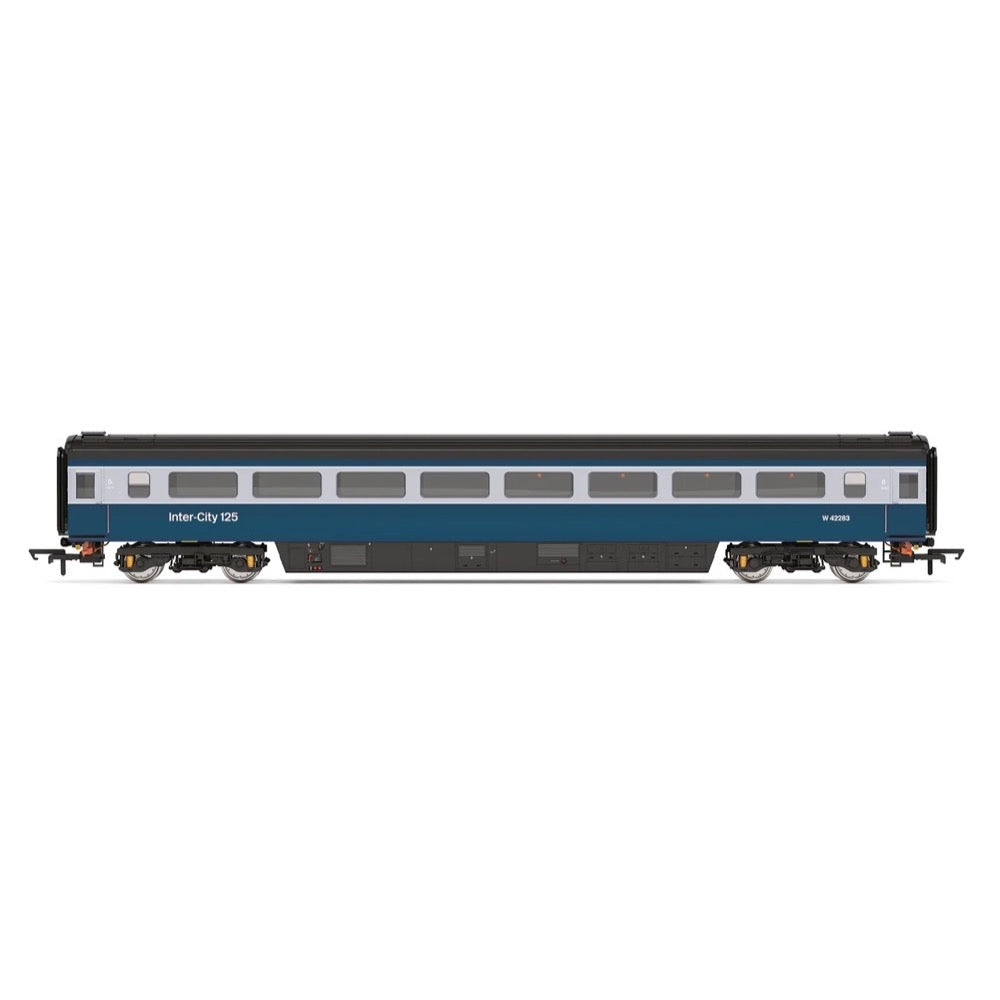
Hornby R40391 OO BR Mk3 Trailer Standard Open 42283 Era 7
48.00
$
<p>In-order to allow running at 125 mph on Britain's Victorian era railways, new rolling stock was needed by British Railways. Significant improvements over the Mk2 included new secondary air suspension between the bogies and the coach body as well as aerodynamic skirting on the underframe.</p>
<p>Mk3 coaches are 75ft (23m) long enabling far greater capacity than older coaches. Mk3 coaches also incorporate disk breaks and wheel slip protection enabling faster deceleration. The first Mk3 coaches to be delivered were used as part of the HST prototype along with the two Class 41 diesel power cars in 1972.</p>
<p>Mk3 coaches entered service in 1975 along with the Class 43 forming the iconic InterCity 125 trainset. After the HST Mk3 coach variant was introduced, further Mk3 coaches were introduced to the West Coast Mainline for use as part of locomotive hauled trains. Whilst Mk3 stock is standard for HST units, the standard locomotive hauled stock is Mk3a.</p>
<p>Mk3a stock differs from Mk3 stock due to the inclusion of buffers as well as a different electrical system that uses motor generator units in each coach to power air conditioning and other ancillaries Mk3a stock was built until 1984, before 3B stock with improved seating and lighting was built from 1985 to 1988.</p>
<p>The Mk3 coach is perhaps most iconic in its original production livery of the BR Grey and Blue. It is in this livery that the coach, as well as the matching Class 43 units would be introduced, before high speed rail services in the UK would be rebranded into the Intercity Executive livery.</p>
<p>Following the privatisation of the Railway network, Mk3 coaches would find themselves in many colourful liveries, some harking back to the original blue and grey livery of times gone by.</p>
<p>These Mk3 coaches include the provision for lighting provided by the R7305 Maglight lighting unit, as well as fully detailed interiors and metal wheels throughout. For the first time, these coaches also include our new Buckeye style magnetic couplings.</p>
<h3>Specification</h3>
<ul>
<li>Item Length - Without Packaging (cm): 30.3</li>
<li>Item Height - Without Packaging (cm): 5.5</li>
<li>Item Width - Without Packaging (cm): 3.5</li>
<li>Item Weight - Without Packaging: 0.158</li>
<li>Item Scale: 1:76 Scale 00 Gauge</li>
<li>Finish: Painted</li>
<li>Colour: Blue and Grey</li>
<li>Gauge: OO</li>
<li>Operator: BR</li>
<li>Designer: BREL</li>
<li>Livery: BR Blue and Grey</li>
<li>Minimum Curve (mm): Radius 2</li>
<li>Number of Parts: 1</li>
<li>Coupling Type: NEM Tension Lock</li>
</ul>
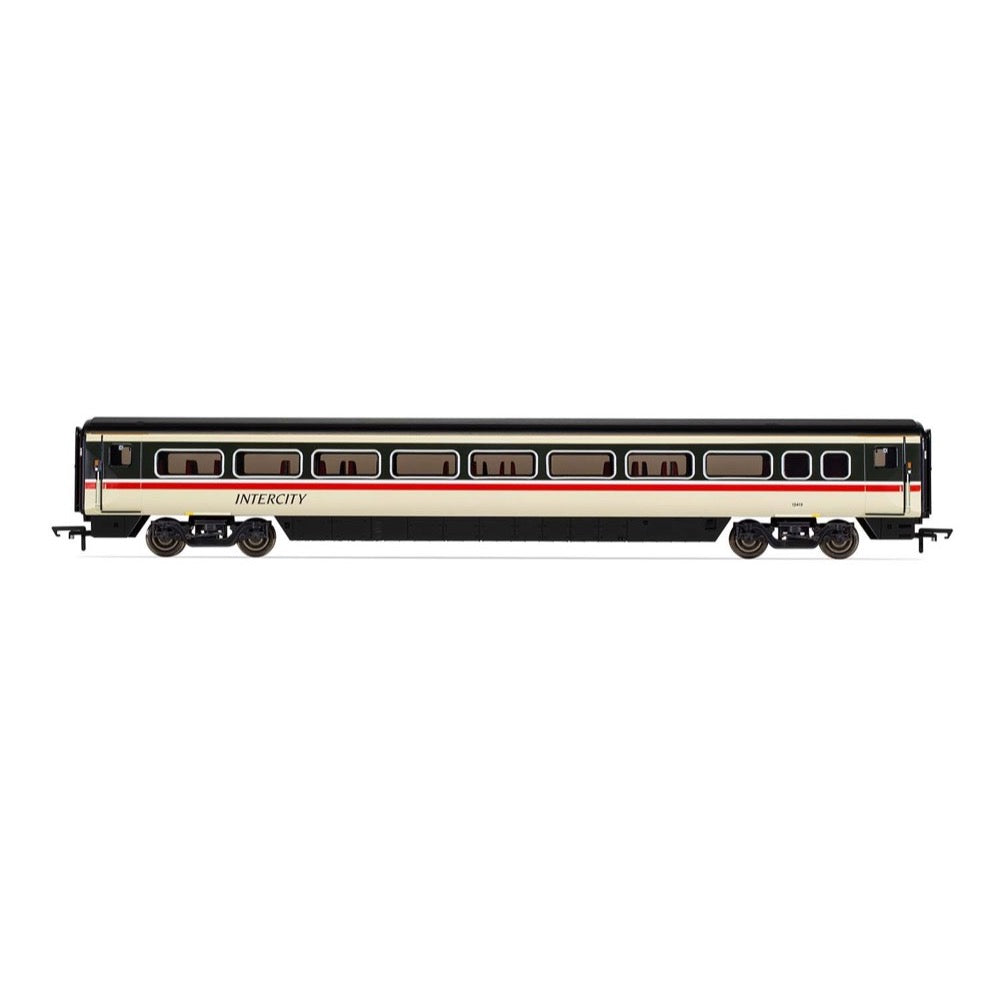
Hornby R40156B OO BR Mk4 Standard Coach D
40.00
$
<p>Built at Metro-Cammell's Washwood Heath factory, 314 Mk4 coaches were produced between 1989 and 1992. They were built specifically for use on the newly electrified East Coast Main Line, along with hopes that a second order for the West Coast Main Line would be placed at a later date, although this second order never transpired. Mk4 coaches featured many improvements over the Mk3s such as push-button operated plug-type doors, fully sealed gangways and a designed top speed of 140mph. Much of the Mk4 design was based upon the Advanced Passenger Train. In particular, Mk4 coaches feature sides profiled to allow a tilt of up to 6° with newly fitted tilting bogies.</p>
<p>Mk4ss entered service in 1989 and helped drive a significant increase in passenger traffic. With privatisation in 1996, all Mk4 coaches were sold to Evershot Rail Group who have since leased them out to the holder of the InterCity East Coast Franchise. The franchise was initially awarded to Great North Eastern Railway (GNER) and has since been operated by National Express East Coast, East Coast, Virgin Trains East Coast and London North Eastern Railway (LNER) owned by the Department for Transport.</p>
<p>Between October 2003 and November 2005 Bombardier Transportation, under contract from GNER, commenced refurbishment of the Mk4 stock, fitting new seating arrangements and introduced onboard Wi-Fi, a first for British rail services. This refurbishment programme was called 'Project Mallard' named after the Mallard steam locomotive, built in the 1930s by the London & North Eastern Railway and holder of the world speed record for steam locomotives.</p>
<p>Although Mk4 coaches have spent most of their lives on the ECML, there are plans to cascade them down to other lines due to the introduction of the Class 800 and Class 801 IEPs.</p>
<h3>Specification</h3>
<ul>
<li>Item Length - Without Packaging (cm): 33</li>
<li>Item Height - Without Packaging (cm): 5</li>
<li>Item Width - Without Packaging (cm): 3.5</li>
<li>Item Weight - Without Packaging: 0.2</li>
<li>Item Scale: 1:76 Scale 00 Gauge</li>
<li>Finish: Painted</li>
<li>License: No</li>
<li>Colour: Grey</li>
<li>Gauge: OO</li>
<li>Operator: BR</li>
<li>Designer: Met Cam</li>
<li>Livery: BR</li>
<li>Minimum Curve (mm): Radius 2</li>
<li>Number of Parts: 1</li>
</ul>


